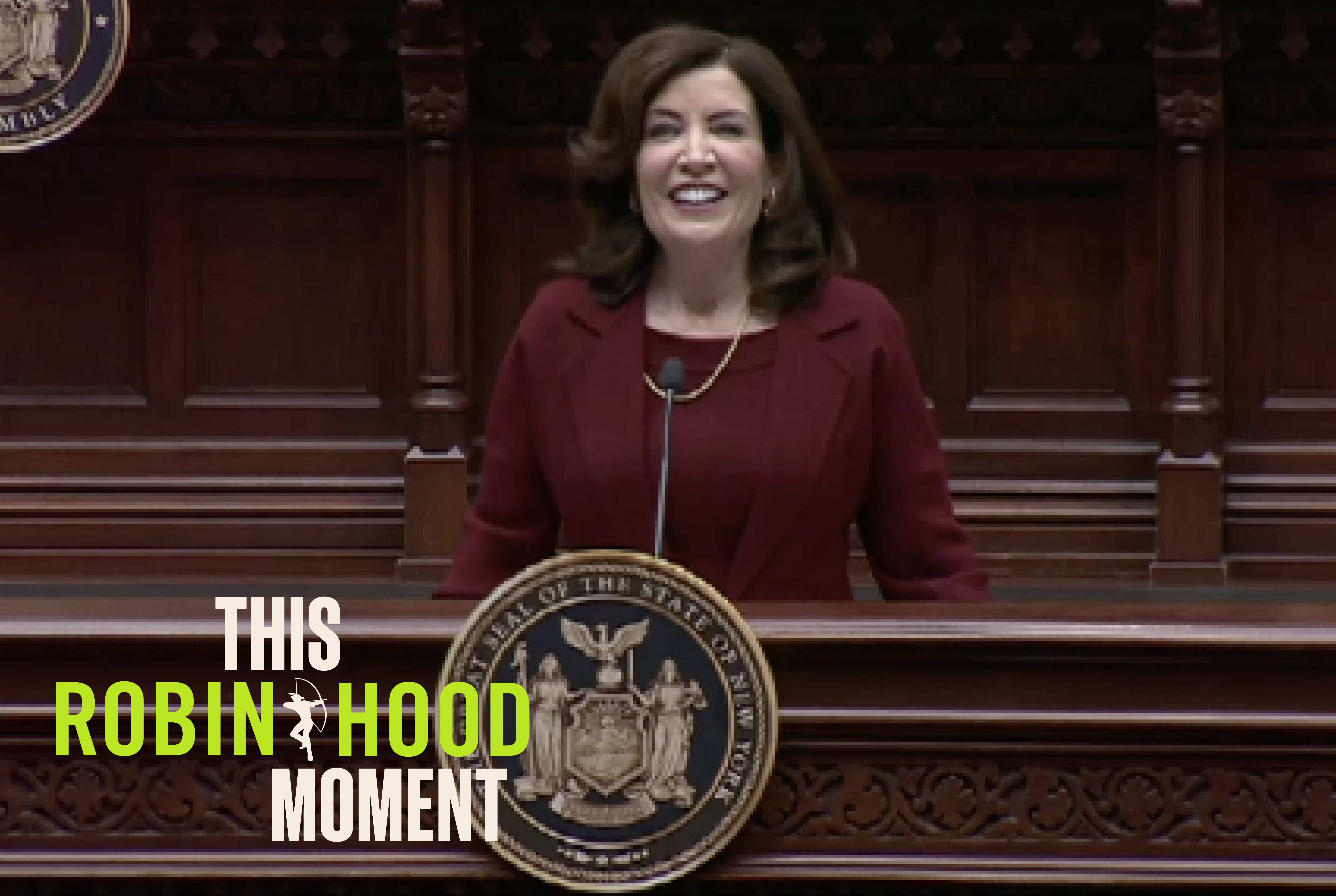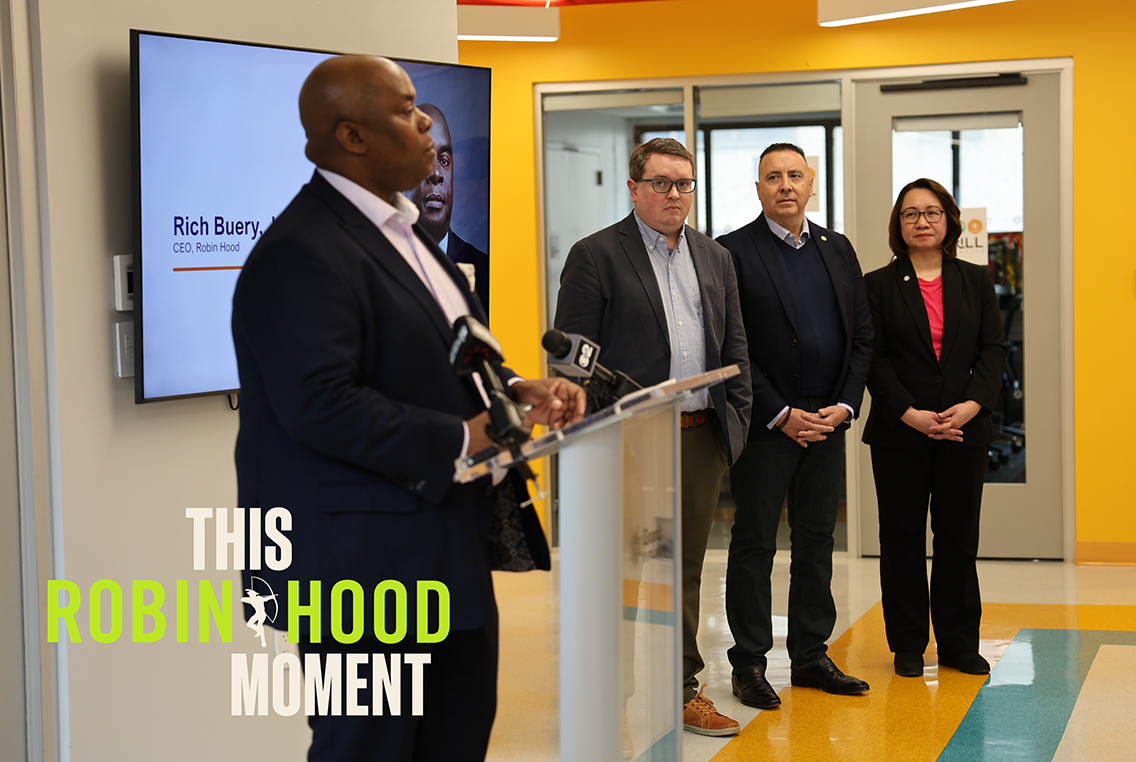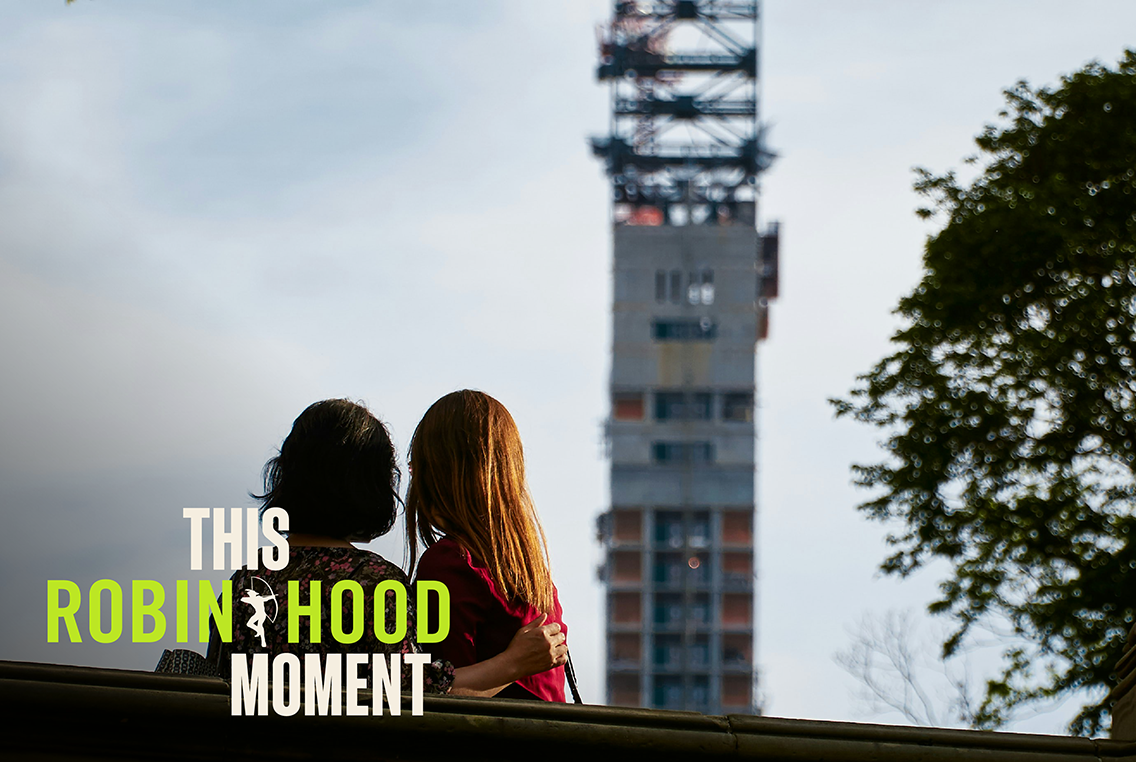Jan 30, 2024
Unpacking Governor Hochul and Mayor Adams' Budget Proposals | This Robin Hood Moment
January marks the beginning of the budgeting process for New York State and City, crucial for funding essential services and programs. Governor Hochul and Mayor Adams recently unveiled their proposed budgets, sparking intense analysis and advocacy. Host Crystal Cooper delves into the implications for fighting poverty in NYC with Robin Hood’s Chief Public Policy Officer, Jason Cone.
Listen and Subscribe: Amazon Music | Apple Podcasts | Spotify | YouTube
Read Robin Hood’s statement on Governor Hochul’s 2024 State of the State Address.
Learn more about Robin Hood’s policy and advocacy work.
Thoughts? Guest suggestions? Email us at info@robinhood.org.
“This Robin Hood Moment” is produced by Cory Winter; graphics are produced by Mary Power; visuals are provided by Motion Array; music and sound are provided by Epidemic Sound. Special thanks to Jason Cone.
The views and opinions expressed by external podcast speakers and guests are solely their own and do not reflect the opinions of Robin Hood or its personnel, nor does Robin Hood advocate or endorse any individuals or entities featured on the episodes.
TRANSCRIPT
This transcript was prepared by a transcription service. This version may not be in its final form and may be updated.
Crystal Cooper: Welcome to “This Robin Hood Moment.” I’m your host Crystal Cooper. It’s January and for those who don’t follow politics, this month kicks off the process for New York State and City to prepare a budget that will fund the government in the upcoming fiscal year. Governor Hochul and Mayor Adams presented their proposed budgets and so the intense period of analysis, negotiation, and advocacy begins to determine where the dollars go. Here to unpack what we heard and what it means for the fight against poverty in New York City is Robin Hood’s Chief Public Policy Officer Jason Cone. Jason, we often say here at Robin Hood that policy fights poverty. Can you explain how the City and State budgets are a tool to do that?
Jason Cone: The reality is the scale of the problems that Robin Hood and other organizations are fighting, when we talk about poverty and sort of a lack of economic opportunity in New York City, are just too large for any one philanthropic organization to tackle, and that’s why we need the weight of government to come in and to make sure that the policies are right. Philanthropy can be sort of the risk capital or the innovation for government and that’s what we try and do at Robin Hood every day. So when we have the case to scale programs that show they’re going to help, you know, manyfold New Yorkers who want government to invest in those highly effective programs, and that’s why we need policy alongside making the smartest grants to the best organizations to really tackle this overall problem of poverty in New York City.
Crystal Cooper: So, we need the scale of government to reach as many people as we can with solutions that we know work, so let’s focus on some of those solutions. At this point in time, I understand we have the full details on the Governor’s proposals.
Jason Cone: That’s right. Last week, we received the Governor’s executive budget proposal. It came about a week after she did what they call the State of the State, which is essentially a place where the Governor sort of goes through her top priorities and where she thinks the State needs to go, and there were many really you know quite strong things in that speech and that budget. It was first a really strong recognition of how unaffordable New York has become for many New Yorkers, and how that is unfortunately pushing people to leave the State or to really just struggle day in and day out, and that really flows from incredibly high cost of housing; the fact that when family households have children just the weight of having a child is actually one of the life events that Robin Hood has found through our Poverty Tracker research—our longitudinal study of New Yorkers—it’s actually an impoverishing event to have a child and we don’t want that to happen, so things like child care incredibly unaffordable, and really health issues obviously someone gets sick that can drive them into poverty. So, those are three you know big bucket areas where we were looking to see what the Governor was going to do, and she made make some promising announcements on a couple of those fronts particularly in the areas of health.
Crystal Cooper: What else did we hear from the Governor, especially in those big buckets of affordability and I guess events that cause financial shock to New Yorkers?
Jason Cone: One thing that you know we don’t think as much about is having to leave work because you’re sick, and we have a program called the Temporary Disability Insurance Program, which is meant to provide short-term assistance to workers who have fallen ill and have to leave the workforce. But this program hasn’t seen a change in what they call the Wage Replacement Rate, so how much money I get as a percentage of my salary that the State is going to give me if I qualify, and basically that ceiling was $170 a week and that hasn’t changed since 1989. Robin Hood spent a lot of time working with group called A Better Balance that we what we fund and partner with to to support a campaign to reform that program and the Governor announced that she intended to essentially bring up that wage replacement rate over seven times what it is currently up to $1,250 a week, and that’s a huge deal; could affect tens of thousands of New Yorkers, many of whom have also disabilities, and so that was a huge announcement. We look forward to working with the Governor to make and the legislature to sort of hopefully make that change happen faster. That would really have a major impact on low-income families across the state.
Crystal Cooper: That’s incredibly easy to grasp, I mean with the cost of food soaring, housing, you know, as you mentioned we have generally are in an affordability crisis. So, what are the gaps that exist between you know what we’ve heard and what we need to prioritize to properly address the needs of New Yorkers who are struggling.
Jason Cone: So, two of those areas that really are hurting New Yorkers: the cost of housing and the cost of child care. So, the Governor did propose a number of proposals that would help to build housing over a period of time. Those proposals weren’t as bold as what she had proposed last year, which got unfortunately didn’t make it through a deal during the budget or legislative season. So, she did make some some proposals that would do things like encourage housing development on State-owned land or properties, converting offices into residential facilities, things like basement apartments. Really good, but that’s not going to happen overnight, and people right now can’t afford cost of their rent. She didn’t include, for example, a thing called the Housing Access Voucher Program, which would essentially give vouchers to New Yorkers to help them pay rent. A proposal that’s in the legislature that was supported last year that Robin Hood is very supportive of would you know help to house anywhere from 13,000 to 20,000 people. So that’s something that was left out, unfortunately ;we hope the Governor will agree to support that. And then on child care, child care costs as much as essentially putting teenager you know through college at a SUNY or CUNY campus, essentially a full tuition; New Yorkers can’t afford that. The Governor has made a lot of investments—$7 billion over four years in child care—but what she hasn’t done is proposed a way to pay the child care workforce. They are some of the lowest paid workers in the state; 95 percent of jobs in the state of New York pay better than being a child care worker, which is shocking; it pays more to be a dog walker than it does to care for children in the state. That wasn’t addressed and we really need to see that change and that’s not something we can put on the back burner.
Crystal Cooper: We need to see urgency here, right? It’s one thing to bring more units onto the housing market, into the supply over time, but what about, you know, people who can’t afford their rent right now? What about people who depend on child care right now, and the worker isn’t being paid enough to make that possible? What are some important factors that might influence the outcome of this year’s budget and help us either see some of these gaps addressed or that might, you know, lead to this being more of a challenge than we would like?
Jason Cone: Well, there’s really two major factors: one is is that the entire State Legislature, all the members have to seek re-election from November. So, that can both be a positive and a negative factor in terms of what risks lawmakers are willing to take from a public policy standpoint. That’s the sort of political side, then there’s just the practicalities of how much revenue is available to fund programs.
Crystal Cooper: So, it good news or bad news for us this year?
Jason Cone: It’s better than, it’s better than it was expected in terms of the tax revenue is looking better than it had been, and New York State, the State government has never had more fund money in its sort of so-called rainy day and sort of emergency budget funds that it could draw on to really make substantial investments in different areas, and one of the things I’d like to mention was that the Governor did say that she would put forward about $2.4 billion towards the cost of helping to support the new New Yorkers who have been coming from around the world, seeking asylum, so that is a good thing; that’s a benefit of the better than expected revenue that there’s been more support…
Crystal Cooper: And that’s totally separate, a new bucket of money that the City can use too, amazing to help these migrant…
Jason Cone: Exactly, to help pay for the shelter, help pay for relocating people. That’s really important and will have a dramatic impact on what the City has to do in terms of its own cuts.
Crystal Cooper: Understood. Well, we will keep an eye out on the negotiations and all of the work that your team will be doing over the next few months to really push for these solutions that can complement our grant making and make a big dent in the fight against poverty here in New York. That was our Chief Public Policy Officer Jason Cone, and that’s it for “This Robin Hood Moment.” Today’s show was produced by Cory Winter. Our graphics were produced by Mary Power. I’m Crystal Cooper for Robin Hood—New York’s largest poverty-fighting philanthropy. Thanks for listening.



